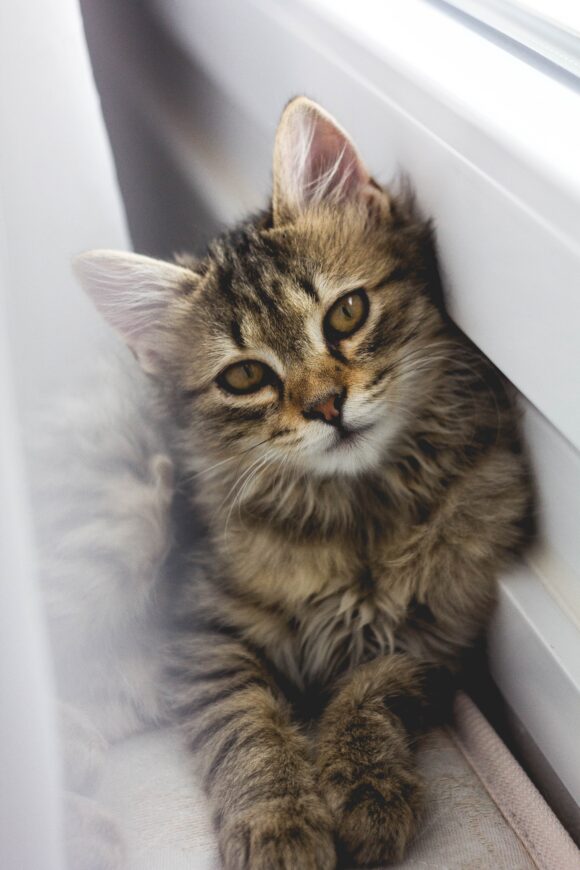Mastering Cat Grooming Techniques
If you’ve ever struggled to groom your feline friend, “Mastering Cat Grooming Techniques” is here to help. This comprehensive guide is packed with invaluable tips and tricks to make grooming your cat a breeze. From understanding your cat’s grooming needs to mastering grooming tools and techniques, this product provides everything you need to keep your furry friend looking and feeling their best. Say goodbye to the stress and frustration of cat grooming and say hello to a smooth and enjoyable grooming routine with “Mastering Cat Grooming Techniques.”
1. Types of Cat Coats
1.1 Long-haired cats
Long-haired cats have beautiful, flowing coats that require regular grooming to keep them healthy and tangle-free. Breeds such as Maine Coons, Persians, and Ragdolls fall into this category. Their fluffy coats can easily become matted if not brushed regularly.
1.2 Short-haired cats
Short-haired cats, like the Siamese, Russian Blue, and Bengal, have sleek coats that are relatively low-maintenance compared to long-haired cats. While they don’t require as much brushing, they still benefit from regular grooming to remove loose hair and stimulate their skin.
1.3 Curly-haired cats
Curly-haired cats, such as the Devon Rex and Selkirk Rex, have unique coats that resemble a perm. Their fur is soft and curly, which requires specific grooming techniques to keep it looking its best. Regular brushing can help prevent tangling and matting.
1.4 Hairless cats
Hairless cats, like the Sphynx, have little to no fur. Despite their lack of hair, they still require grooming to maintain healthy skin and prevent excessive oil buildup. Bathing and moisturizing their skin is crucial to keep it clean and well-nourished.
2. Essential Cat Grooming Tools
2.1 Cat brush
A cat brush is an essential tool for all cat owners, regardless of their cat’s coat type. It helps remove loose hair, prevent matting, and stimulate the skin, promoting a healthy coat. Different brushes are available for various coat lengths and sensitivities.
2.2 Cat comb
A cat comb is another tool that aids in removing tangles and preventing matting. Combs with wide and narrow teeth are useful for different areas of a cat’s coat. Additionally, metal combs can help remove fleas and their eggs.
2.3 Cat nail clippers
Trimming your cat’s nails is an integral part of grooming. Nail clippers designed for cats come in different styles, including guillotine and scissor-type clippers. Regular nail trims prevent ingrown nails and reduce the risk of painful scratches.
2.4 Cat grooming gloves
Grooming gloves are a convenient tool that allows you to brush your cat using your hands. These gloves have rubber bristles that help remove loose hair and provide a gentle massage. They are especially useful for cats who may be fearful of traditional brushes.
2.5 Cat grooming scissors
Cat grooming scissors are specifically designed for safely trimming fur around sensitive areas such as the eyes, ears, and paws. They have rounded tips to prevent accidental cuts and come in various sizes to accommodate different coat lengths.
2.6 Cat grooming wipes
Cat grooming wipes are handy for quick touch-ups between baths. They help remove dirt, dander, and loose hair, while some wipes are designed to provide additional benefits like moisturizing or reducing allergens. Grooming wipes are particularly useful for cats who dislike water.

3. Preparing Your Cat for Grooming
3.1 Creating a calm environment
Before starting any grooming session, it’s important to create a calm and quiet environment. Choose a space where your cat feels relaxed and safe, away from any distractions or loud noises. Consider using soft music or pheromone sprays to create a soothing atmosphere.
3.2 Getting your cat accustomed to grooming
If your cat is new to grooming or sensitive to being touched, it’s essential to gradually introduce them to the process. Start by simply touching and stroking their body without any tools. Reward them with treats and praise to associate grooming with positive experiences.
3.3 Brushing your cat’s teeth
Brushing your cat’s teeth is crucial for maintaining their oral health. Use a cat-specific toothbrush and toothpaste to gently brush their teeth in a circular motion. Start with short sessions and gradually increase the time as your cat becomes more comfortable.
3.4 Trimming your cat’s nails
To trim your cat’s nails, make sure they are in a relaxed state. Hold their paws gently and use the appropriate nail clippers to trim the tips, being careful not to cut into the quick. If your cat is resistant, try associating nail trims with treats or enlist the help of a professional groomer.
4. Proper Brushing Techniques for Cats
4.1 Brushing different coat types
When brushing your cat, it’s important to choose the right brush for their specific coat type. For long-haired cats, use a wide-toothed comb to remove tangles and a pin brush to detangle and smooth the fur. Short-haired cats benefit from a bristle brush to remove loose hair effectively.
4.2 Brushing against matting
To prevent matting, it’s important to brush against the direction of hair growth. Use a slicker brush or a mat-removing comb to gently work through any tangles. Be patient and avoid pulling on the hair, as it can cause discomfort or pain for your cat.
4.3 Brushing sensitive areas
Sensitive areas such as the face, ears, and tail may require extra care when brushing. Use a soft-bristled brush or grooming gloves to gently remove loose hair and dirt. Take your time and pay attention to your cat’s body language to ensure they are comfortable throughout the process.
4.4 Brushing from head to tail
When brushing your cat, it’s best to start from the head and work your way towards the tail. This allows you to carefully detangle any knots while maintaining a smooth and even coat. Remember to reward your cat with praise and treats throughout the grooming session.

5. Bathing Your Cat with Ease
5.1 Preparing your cat for a bath
Bathing a cat can be challenging, but with the right preparation, it can become a stress-free experience. Start by trimming your cat’s nails and brushing their coat to remove any loose hair or tangles. Place a non-slip mat in the sink or bathtub to provide stability for your cat.
5.2 Choosing the right cat shampoo
When selecting a cat shampoo, opt for a gentle formula specifically formulated for feline use. Avoid using human shampoos, as they can be too harsh for your cat’s delicate skin. Always follow the instructions provided on the shampoo bottle and rinse thoroughly to remove all traces of soap.
5.3 Using proper bathing techniques
When bathing your cat, use lukewarm water and gently wet their coat, avoiding their face. Apply a small amount of shampoo and work it into a lather, ensuring to cover all areas. Rinse thoroughly and avoid getting water in your cat’s ears. Towel-dry them and keep them warm until completely dry.
5.4 Drying your cat after a bath
After bathing, use a clean towel to remove excess water from your cat’s fur. If your cat tolerates it, you can use a low-heat blow dryer set to the lowest setting to speed up the drying process. Ensure that the dryer is not too close to your cat and always monitor their comfort level.
6. Understanding Cat Skin and Coat Health
6.1 Recognizing signs of skin problems
Understanding your cat’s skin health is crucial to their overall well-being. Regularly check their skin for any signs of dryness, flakiness, redness, sores, or excessive oiliness. These could be indicators of underlying health issues such as allergies or skin infections, necessitating a visit to the veterinarian.
6.2 Promoting a healthy coat through diet
A proper diet plays a significant role in maintaining a healthy coat for your cat. Ensure they receive a balanced and complete diet that includes high-quality protein and essential fatty acids. Consult your veterinarian for specific dietary recommendations based on your cat’s individual needs.
6.3 Dealing with shedding
All cats shed to some extent, but excessive shedding may warrant attention. Regular brushing helps remove loose hair and minimize shedding. If shedding is excessive or accompanied by bald patches, consult your veterinarian to rule out any underlying health issues contributing to the problem.
6.4 Managing allergies
Allergies can affect a cat’s skin health, resulting in itching, redness, or hair loss. If you suspect your cat has allergies, consult your veterinarian for proper diagnosis and treatment options. Identifying and avoiding potential allergens, such as certain foods or environmental factors, can help manage allergies effectively.

7. Handling Cat Hair Mats and Tangles
7.1 Identifying and preventing mats
Mats are tightly tangled clumps of fur that can be uncomfortable and painful for your cat. Regular brushing is the key to preventing mats from forming. Pay close attention to areas prone to matting, such as behind the ears and under the armpits. If you do find a mat, it’s important to address it promptly.
7.2 Tools and techniques for mat removal
To remove mats, use a mat-removing comb or mat splitting tool. Gently work through the mat, starting from the ends and gradually working your way towards the base. Take your time and be careful not to pull or tug on the hair, as it can cause discomfort or skin irritation.
7.3 Detangling tangled fur
When dealing with tangled fur, use a wide-toothed comb or your fingers to gently separate the strands. Apply a detangling spray or a small amount of conditioner to make the process easier. Take breaks if your cat becomes stressed or agitated, and reward their patience with treats and praise.
8. Cat Grooming for Sensitive Cats
8.1 Gentle grooming approaches
Sensitive cats may require a more gentle approach to grooming. Use soft-bristled brushes or grooming gloves to avoid causing discomfort. Start with short grooming sessions and gradually increase the duration as your cat becomes more comfortable. Patience and positive reinforcement are key.
8.2 Dealing with fear or anxiety
If your cat exhibits fear or anxiety during grooming, it’s important to address their emotional well-being. Try using pheromone diffusers or sprays designed to promote a sense of calmness. Create a routine and provide familiar objects or treats to help your cat associate grooming with positive experiences.
8.3 Using calming techniques
Calming techniques, such as gentle massage or T-touch therapy, can help relax your cat before and during grooming sessions. Establish a calm and quiet environment, practicing a slow and reassuring approach. Observe your cat’s body language and adjust your techniques accordingly.
8.4 Seeking professional help
If you’re struggling to groom your sensitive cat or if they become overly stressed or aggressive during grooming, it may be necessary to seek professional help. Professional groomers have experience working with challenging cats and can offer guidance on the best approach for your cat’s individual needs.
9. Maintaining Oral Hygiene in Cats
9.1 Brushing your cat’s teeth
Brushing your cat’s teeth is vital for preventing dental disease and maintaining their oral health. Use a cat-specific toothbrush and toothpaste to gently brush their teeth in a circular motion. Start slow, gradually increasing the time and seeking help from a veterinarian if your cat is resistant.
9.2 Using dental wipes or sprays
In addition to brushing, dental wipes or sprays can aid in maintaining your cat’s oral hygiene. These products are designed to remove plaque and freshen breath. Follow the instructions provided by the manufacturer and consult your veterinarian for specific recommendations.
9.3 Incorporating dental treats
Dental treats can be beneficial for your cat’s oral health. These treats are designed to help remove plaque and tartar buildup while providing a tasty reward. Opt for dental treats that carry the Veterinary Oral Health Council (VOHC) seal to ensure their safety and effectiveness.
10. Trimming Your Cat’s Nails
10.1 Choosing the right nail clippers
Selecting the appropriate nail clippers for your cat is essential for a safe and efficient nail trimming session. Guillotine-style or scissor-type clippers are commonly used for cats. Choose clippers that are the right size for your cat’s nails and ensure they are sharp to avoid crushing or splintering.
10.2 Trimming techniques for different cat breeds
Each cat breed may require slight variations in nail trimming techniques. For cats with clear or light-colored nails, it’s easier to identify the quick, the blood vessel within the nail. For cats with dark-colored nails, trim small sections of the nail at a time to avoid cutting into the quick.
10.3 Handling resistance or stress
If your cat resists or becomes stressed during nail trims, it’s important to remain calm and patient. Establish a routine by offering treats and positive reinforcement before, during, and after nail trims. Gradually increase the length of your trimming sessions as your cat becomes more comfortable.
Mastering cat grooming techniques takes time, practice, and patience. By understanding your cat’s coat type, using the right grooming tools, and implementing proper grooming techniques, you can help ensure your feline friend stays clean, comfortable, and healthy. Remember to always monitor your cat’s behavior and seek professional help if needed. With the right approach, grooming can become a bonding experience for both you and your cat.

